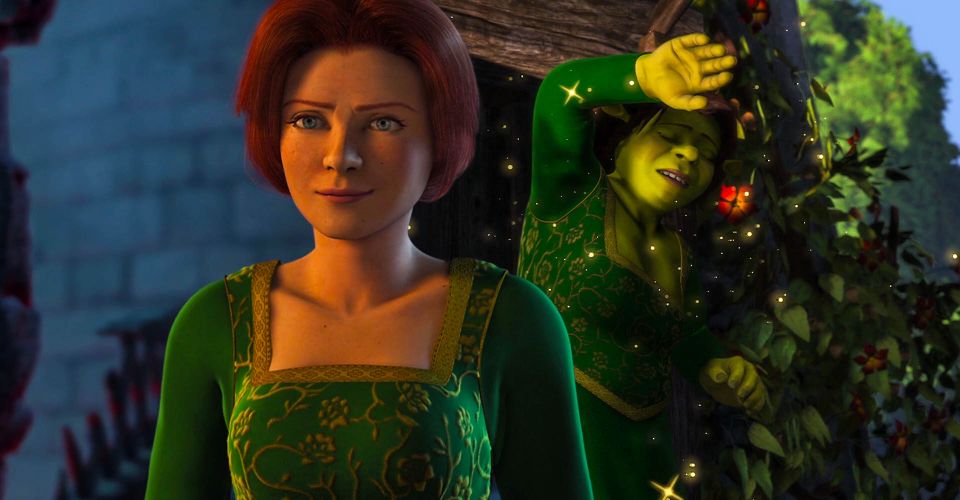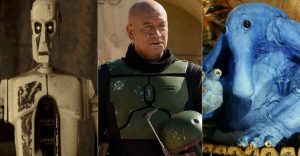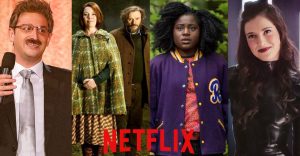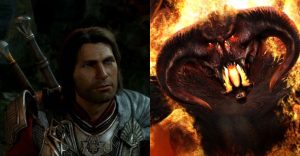Shrek’s Story Was Saved By This Simple Fiona Fix

The story for the original Shrek was saved by a very simple Fiona fix. The 2001 DreamWorks film was widely praised for its voice performances and humor, boasting an abundance of in-jokes that poked fun at fairy tales and Disney. Shrek won the first Oscar for Best Animated Feature and grew into a franchise comprising three sequels, a spinoff, holiday specials, and a stage musical.
Shrek follows a misanthropic ogre, played by Mike Myers, as he attempts to rid himself of the fairy tale creatures now residing in his swamp after being banished by Lord Farquaad (John Lithgow). He strikes a deal with the dictator which involves rescuing Princess Fiona (Cameron Diaz) from her imprisonment in a dragon-guarded castle. Shrek varies between reluctant buddy comedy as the ogre teams up with Donkey (Eddie Murphy) and subversive fairy tale romance.
However, Fiona is concealing a huge secret – she turns into an ogre come nightfall. It’s this shapeshifting aspect that created conflict between DreamWorks and screenwriters Ted Elliot and Terry Rossio. Speaking to Creative Screenwriting, they revealed that the studio deemed the ogre idea inappropriate, but all it took was a mere change in wording to have this crucial plot point approved. After pressure from studio executives, Elliot and Rossio decided to subtly alter their pitch to focus less on “shapeshifting” and more on “enchantment“.

According to Elliot, the writers challenged the notion that shapeshifting “doesn’t seem appropriate for fairytales”. They delivered a concise counterargument, noting Ariel in The Little Mermaid and Beauty and the Beast. Given the long history of physical transformation in fairy tales, this seems an incredibly weak excuse for wanting to abandon the idea. Shrek’s producers would surely have been aware of these stories, suggesting that the real reason might have stemmed from an unwillingness to have an “ugly” princess. The script’s description of Fiona’s transformation drew particular concern. Per Elliot, “All we wanted was her “ugly self” to be uniquely ugly to her, to not be a female version of Shrek but to be a unique version of herself, as unique as her human appearance was.” This seemed to be a losing battle, until the writers altered their approach with a slight change of wording. She was no longer shapeshifting, but “enchanted”.
This more alluring, magical term for the now-retired Cameron Diaz’s Fiona gave the writers’ story approval, and Shrek continued as originally envisioned. Elliot continues, “If we’d just done that in the first draft, I don’t know that we would have had any problems at all.” This is emblematic of completely unnecessary studio meddling. There are many cases of films being ruined by studios wrestling control from the filmmakers, especially in the superhero subgenre. Zack Snyder’s Justice League is a prime example of a studio removing crucial plot points and twisting stories into what they mistakenly believe viewers want. Elliot and Rossio admirably stuck to their vision for Shrek, rejecting other ideas such as making the ogre friendlier, with a desire to gain respect by becoming a knight. Outdated societal conventions almost impacted the story, with executives deciding themselves what an audience can comprehend and accept.
Pirates of the Caribbean screenwriters Elliot and Rossio’s progressive vision for Shrek largely remained intact, saving the film from the more traditional story of the dignified hero falling for a classically beautiful princess. Not everything succeeded, and the writers admitted they would have preferred if Fiona remained “enchanted” rather than transform into an ogre permanently, to avoid the implication that she belongs with Shrek due to her appearance. This would have improved their themes of self-esteem and acceptance, but the overall story managed to retain ideas of inner beauty through Fiona.
About The Author

















